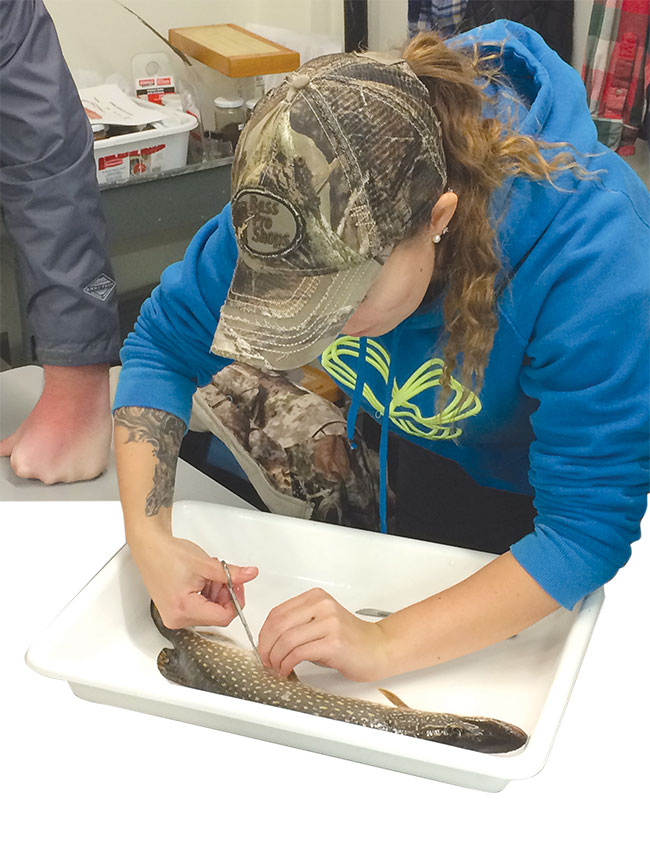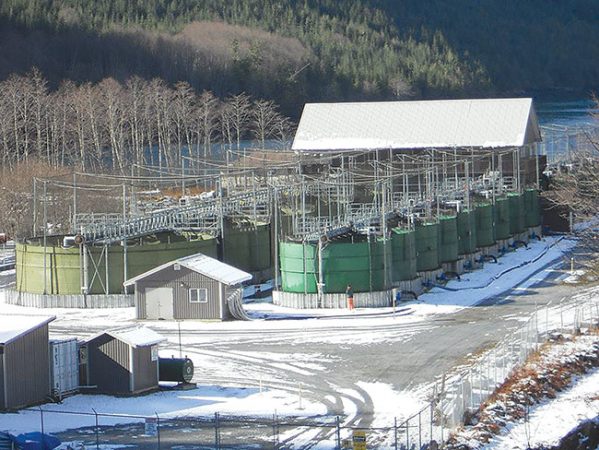
Features
Business Management
Fish handling
Herd mentality
Aligning fish management with farm objectives
October 21, 2020 By Ron Hill
 The farmers' main objective to produce the best quality herd comes before the needs of any individual or small group of fish.
The farmers' main objective to produce the best quality herd comes before the needs of any individual or small group of fish. What’s wrong with this fish and why did it die?”
This is a question supervisors and managers in aquaculture are often faced with from new employees – and one that they really don’t want to answer. Having faced this question many times from students and employees, I tend to agree. Simple as the question may seem, it is seldom that the answer is as simple.
The problem is a difference in mindset, in how the fish are viewed by the farmer against the perceptions of an outsider or new farmer. Farmers are looking at the fish in the tank as a herd, not particularly interested in any one fish, but in the integrity of the herd.
When I answer the question, “What’s wrong with this fish?” I often don’t have the clear and decisive answer people want. Explaining how fish health diagnosis works – that it’s expensive and time consuming to test fish and that the information will likely be of very little value because it’s just one fish and it’s already dead – doesn’t really satisfy inquisitive minds looking for answers.
Through experience on the floor working and understanding fish management, farmers look at the fish in a way that outsiders just can’t see. When outsiders look at a tank of fish their eyes are immediately drawn to the one dead fish on top. A farmer notices the fish on top, but will acknowledge the 2,499 fish in the tank that are healthy and swimming even more. Farmers are concerned about the herd and their objective to produce the best quality herd comes before the needs of any individual or small group of fish.
Herd first
Unless operating an ornamental facility with expensive individual fish or certain broodstock facilities, fish are managed as a herd. Fish are moved, graded, sorted and managed and sold, not as individual fish, but as herds. A koi breeder or broodstock keeper may remove an injured or sick fish, treat it individually and attempt to nurse it back to health, whereas, the fish farmer would simply cull the suspect fish to protect the herd. The value of an individual fish is too low for the common fish farmer to try and spot treat each case. Besides the difficulties in diagnosing issues with a live fish, the cost of treatment is likely to greatly exceed the value of the spot treated fish at harvest.
If fish get sick, they receive treatment as a herd, with the treatment applied to the entire tank encompassing the entire herd. Treatments are designed to be cost-effective by protecting the herd from infection by both treating the fish in the herd that are showing illness and providing a prophylactic treatment to the rest of the herd.
Getting employees to develop a mentality for herd management is something that takes time. Most new employees are eager and interested to learn but don’t have the background in farming to think about herd management. New employees tend to get hung up on something they notice about one fish or a few fish, but fail to notice issues of greater importance which affect the herd as a whole. They are likely to see a few side-swimmers but miss the signs of fungus creeping in before its too late.
Developing a herd first mentality takes time and active thinking about fish management on the part of the employee, the best way to develop herd first thinking is through experience.

New employees tend to get hung up on something they notice about one fish or a few fish, but fail to notice issues of greater importance which affect the herd as a whole.
Managing the herd
Issues with individual fish or small groups of fish must be considered in the context of the herd and fit into long-term trends and thinking. Individuals give clues as to what affects the herd, and thus, are the triggers for how the herd is managed. The fish manager must glean information from fish mortalities, moribund fish, and fish behaviour in order to manage issues with the herd. This information must be examined to see the trends and compared to historical data and anticipated results.
With the data compiled and examined, the fish manager or technician must then use their eyes to detect issues in real time and make their decisions. Resources – time and money – must be deployed to effect solutions.
Cost/benefit analysis is integral to herd management. Is the value of the solution worth the cost of solving the problem? For the new worker who asked, “Why did this fish die?” about the one mort found, the answer is a definitive, No, because the solution likely doesn’t yield a benefit. However, if a tank of fish is having mortality issues, with rising mortality over time, looking into the issue is very important because the entire herd is being negatively affected. Sending fish away to be tested may be immediately necessary and, because of the high number of fish at risk, will be well worth the cost of knowing and applying a solution.
Herd first thinking applies to larger groups than just tanks of fish. Entire rows, buildings or the entire farm can be seen in terms of larger levels of the herd. Cost/benefits can be taken a step further by thinking in terms of larger herds.
Does addressing the issues with one tank level herd have a connection to risks or issues with the larger herd, like that entire row of tanks? Is there benefit to applying a solution to a larger herd? Instead of treating one tank, is it worth treating all the tanks in the row? Is an upgraded system justified that would protect all the tanks (the entire farm herd) against this issue?
Of course, everything depends on the particulars of the farm, problem, solution, and cost/benefit. Herd first thinking allows the farmer to frame their problems and issues in a context that facilitates preventative strategies, protects the most fish in your stock and allows for quality and efficient decision making.
Print this page
Advertisement
- Aquacare introduces new member of Bellingham team
- New Hampshire hatchery permit could lead to costly upgrade





